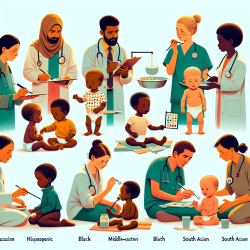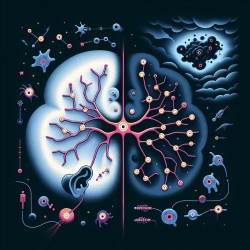Introduction
Severe acute malnutrition (SAM) in toddlers is a critical issue that impacts not only physical health but also cognitive and motor development. A recent study titled Exploring swallowing, feeding and communication characteristics of toddlers with severe acute malnutrition provides valuable insights into the challenges faced by these children. This blog aims to help practitioners improve their skills by understanding the study's outcomes and encouraging further research.
Key Findings from the Study
The study conducted a detailed assessment of three hospitalised toddlers diagnosed with SAM. Here are some significant findings:
- All participants exhibited oral-sensorimotor dysfunction, impacting their ability to feed effectively.
- Despite intact pharyngeal swallows, there were issues with jaw opening, lip closure, and bolus manipulation.
- Participants displayed mild-to-moderate language delays, particularly in interaction-attachment, play, and language comprehension.
- No participants were referred for speech-language therapy, highlighting a gap in current healthcare practices.
Implications for Practitioners
These findings underscore the importance of early intervention by speech-language therapists (SLTs) in managing swallowing and feeding difficulties in toddlers with SAM. Practitioners should consider the following strategies:
- Early Assessment: Conduct thorough assessments of oral-sensorimotor functions and language development as part of the initial evaluation for toddlers diagnosed with SAM.
- Interdisciplinary Collaboration: Work closely with a multidisciplinary team, including dieticians and pediatricians, to develop comprehensive care plans that address both nutritional and developmental needs.
- Parental Involvement: Educate and involve parents in feeding practices and communication strategies to enhance the child's recovery and development.
- Referral Systems: Establish clear protocols for referring children to SLT services when signs of feeding or communication difficulties are observed.
Encouraging Further Research
While this study provides a foundational understanding, further research with larger sample sizes is essential to generalize findings and refine intervention strategies. Practitioners are encouraged to contribute to ongoing research efforts and share insights from clinical practice.
Conclusion
The study highlights the complex interplay between malnutrition, feeding difficulties, and communication delays in toddlers. By integrating these insights into practice, SLTs can play a crucial role in improving outcomes for children with SAM. For those interested in delving deeper into the research, the original paper offers a comprehensive analysis and can be accessed here.










